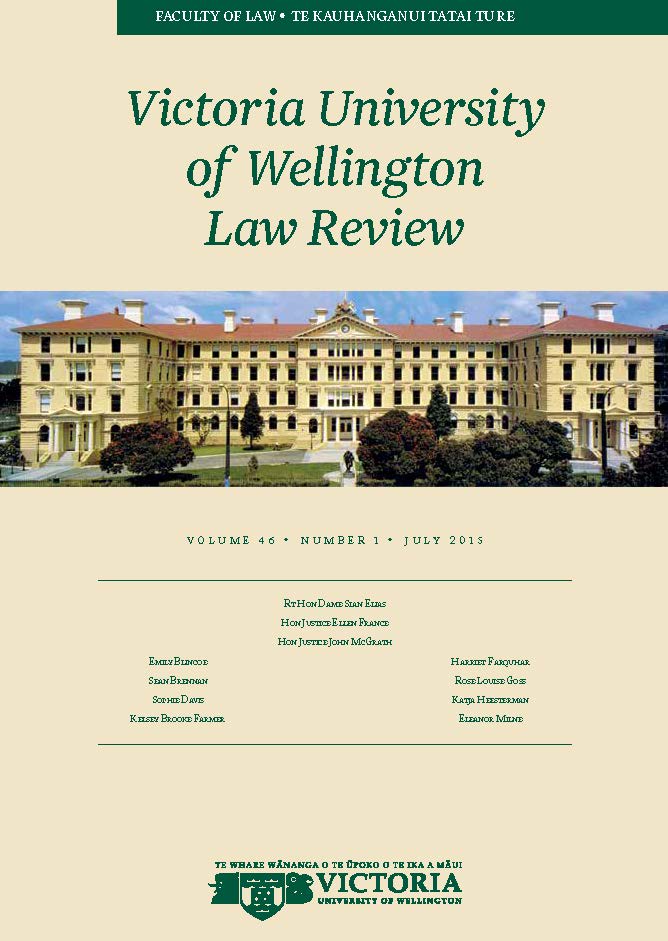Hung out to Dry? Questioning the Legality of Minnie Dean's 1895 Trial and Execution
DOI:
https://doi.org/10.26686/vuwlr.v46i1.4932Abstract
In 1895 Minnie Dean became the only New Zealand woman to receive the death penalty. She was found guilty in the Invercargill Supreme Court of the murder of Dorothy Edith Carter, a child she had recently adopted, who was found buried in her garden alongside two other infants. Branded a vindictive baby-farmer, Minnie Dean was widely condemned by the New Zealand press and public during the four months between her arrest and execution. This article will assess whether Minnie Dean was afforded a fair criminal trial and sentencing. From a 21st century perspective, it can appear that Minnie's fate was inevitable from the time of her arrest and that her trial was merely a formality. Despite Minnie's often harsh treatment, this article will argue that against 1895 legal standards, correct criminal procedure was generally followed. However, when comparing Minnie Dean's trial and sentencing with contemporaneous murder trials, it is evident that she received no procedural clemency.
Downloads
Downloads
Published
How to Cite
Issue
Section
License
Authors retain copyright in their work published in the Victoria University of Wellington Law Review.


